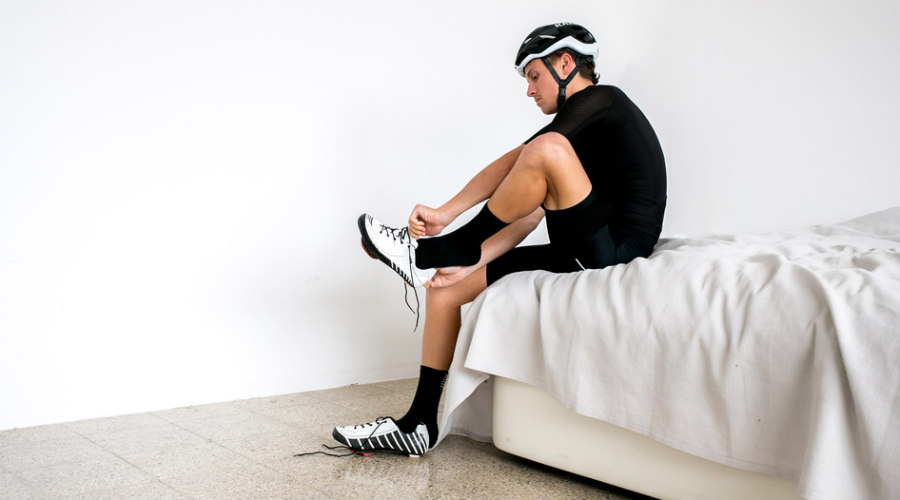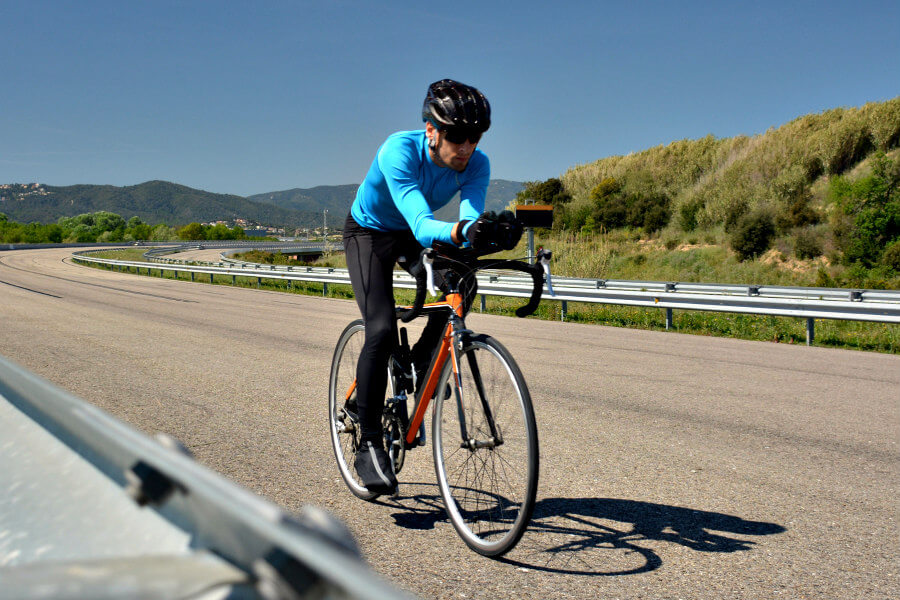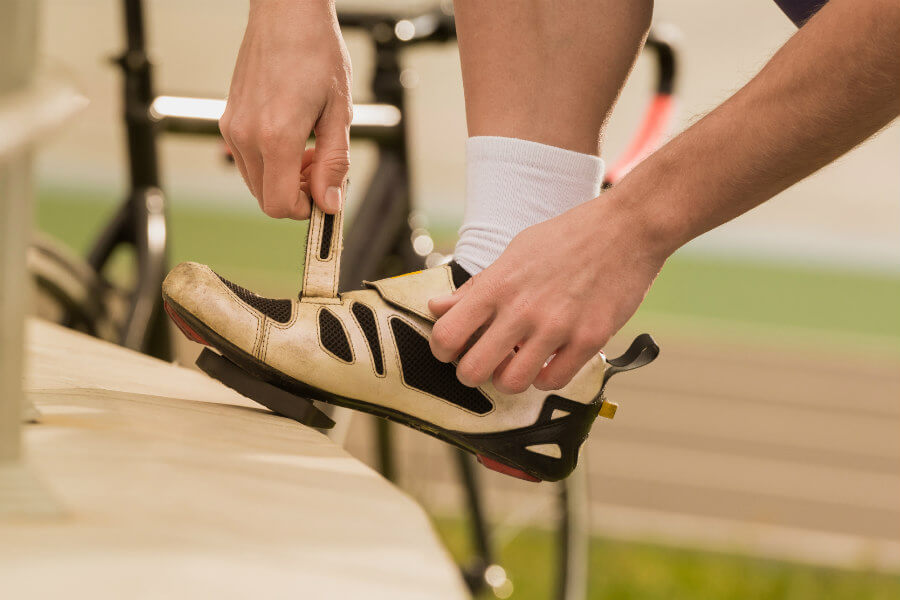Winter has arrived. We ended the good, the heat left, the days are shorter and it is time to make carambolas to be able to train and continue enjoying our outputs by bicycle.
So, if we want to continue with this sport that gives us so many joys, we will have to go out with cold and probably one day we will arrive by water home.
We are going to try to be predictors and take action on the matter so that it does not catch us by surprise and have a bad time on the bicycle. Today I am going to talk about the most economical way to get hot and dry feet (as far as possible) in our winter exits: the covers shoes.
What are they and what are they for

The name of cover shoes (or covers) does not deceive anyone. They are a complement that serves to cover our road and MTB shoes as an outer sock.
To what does we need to cover our cycling footwear? Well, depending on the tissue, the type of covers and colors, we will get different properties such as maintaining heat, avoiding that between water in the foot, be more visible by cars and other cyclists or win an aerodynamic point.
[IRP posts = "3854" name = "How to prepare to go by bicycle in winter"]
Types of Cycling Shoes
Not all covers the cycling shoes are the same. In addition to being clear if we are going to use them for road or
Mountain Bike, they differ depending on the type of tissue from which they are made and the type of protection they provide.
Covers toe shoes
They are the ones that only cover the toe of our shoe or boot. Its goal is to keep the part that suffers the cold of our feet: the fingers.
It is recommended that they have neoprene thermal cover to counteract the cold. They have a hole in the plant for the cove, which will be used to also hold.
If we want to use them for mountain cycling, you will have to look at specific models that have hole for the tacos of our boots, since if we will not burst them shortly that we have to set foot on the ground and walk the mountain.
Socks
It is probably the least recommended option for their little durability, but the most economical. Simply, this type of covers is a sock that is placed on top of the footwear and covers us above the ankle. It serves to protect our shoes from possible wear, dust or mud.
[IRP posts = "2770" name = "five things you should know about cycling socks"]
Filling Licra or Latex shoes

They are fine and elastic, aesthetically they look pretty good and are used in counterrelojes for an aerodynamic theme. They can help us and also to protect the shoes and lengthen their useful life by not having to be cleaning them after each bicycle outlet that we do in winter. Do not forget that, even if it does not rain, in winter it is very likely that we return from a bike exit with the shielded shoes.
Thermal cover
Its function is to take away the cold. They are usually neoprene. It is a fabric that this fabric keeps heat very well and protects from rain, although it has the inconvenience of being uncompirable.
In the neoprene covers with zip closure we must notice that they are thermosellated.
Covers waterproof shoes
They are ideal for rainy areas, and there are few things more unpleasant than making an exit with soaked feet. If we add the cold to the rain we can get our training or exit to become a true nightmare.
Depending on the brand and the range, there are manufacturers that use their own waterproof or window tissues. Others use Gore Tex or neoprene combined with a waterproof surface tissue.
Within each typology of covers there are always ranges depending on the designs and materials with which they are made. For example, there are models that reinforce the heels and toe with Kevlar to give it resistance.
Others, to preserve heat and impermeability, instead of neoprene use Gore Tex polar lining. There are even led shoes that give you up to 240 hours of light.
[IRP Posts = "3867" name = "How to dress to go by bicycle in winter"]
What a size to choose

The carving of each covers depends on the manufacturer. There are those that carve by number as in the footwear, and there are those that carve by size (s, m, l, xl; small, large ...).
The latter surely facilitate a table in which they determine the range that covers each size (eg: m: 39-42; l: 43-45…). In any of both cases our number will always be that of our shoe, we must not buy one more number because of the fact that they are put over.
Conclusions
Good waterproof or neoprene covers, along with a good winter sock, are an excellent combination to get that cold from our feet.
It is also highly recommended that they have some reflective element, since at this time of the year the light is scarce and any help to favor our visibility is always welcome.
For
Mountain Bike The thing changes. And, by my experience, the durability of the covers is quite short. Although there are models that leave hole for the tacos of our boot, as you have to walk through the mountain you will end up shattering them in a few outputs.
Probably the best option for mountain cycling is to carry some socks in line with this time of the year and some winter shoes, if possible waterproof.
Another cheaper combination can be waterproof socks, such as the Sealskinz, with the MTB shoe that we use for the rest of the year. But it would be necessary to take into account how fair you have the shoe, since these socks are much thicker than normal ones.
In any case, winter is not the same in each place. In Asturias, for example, we are more concerned with water. In other places, the cold and in others the wind. So depending on the needs of each one we will have to choose the option with which we are most comfortable. And, today, there are many options and possible combinations to fight winter and continue enjoying our bike exits, which is what we want.
 The name of cover shoes (or covers) does not deceive anyone. They are a complement that serves to cover our road and MTB shoes as an outer sock.
To what does we need to cover our cycling footwear? Well, depending on the tissue, the type of covers and colors, we will get different properties such as maintaining heat, avoiding that between water in the foot, be more visible by cars and other cyclists or win an aerodynamic point.
[IRP posts = "3854" name = "How to prepare to go by bicycle in winter"]
The name of cover shoes (or covers) does not deceive anyone. They are a complement that serves to cover our road and MTB shoes as an outer sock.
To what does we need to cover our cycling footwear? Well, depending on the tissue, the type of covers and colors, we will get different properties such as maintaining heat, avoiding that between water in the foot, be more visible by cars and other cyclists or win an aerodynamic point.
[IRP posts = "3854" name = "How to prepare to go by bicycle in winter"]
 They are fine and elastic, aesthetically they look pretty good and are used in counterrelojes for an aerodynamic theme. They can help us and also to protect the shoes and lengthen their useful life by not having to be cleaning them after each bicycle outlet that we do in winter. Do not forget that, even if it does not rain, in winter it is very likely that we return from a bike exit with the shielded shoes.
They are fine and elastic, aesthetically they look pretty good and are used in counterrelojes for an aerodynamic theme. They can help us and also to protect the shoes and lengthen their useful life by not having to be cleaning them after each bicycle outlet that we do in winter. Do not forget that, even if it does not rain, in winter it is very likely that we return from a bike exit with the shielded shoes.
 The carving of each covers depends on the manufacturer. There are those that carve by number as in the footwear, and there are those that carve by size (s, m, l, xl; small, large ...).
The latter surely facilitate a table in which they determine the range that covers each size (eg: m: 39-42; l: 43-45…). In any of both cases our number will always be that of our shoe, we must not buy one more number because of the fact that they are put over.
The carving of each covers depends on the manufacturer. There are those that carve by number as in the footwear, and there are those that carve by size (s, m, l, xl; small, large ...).
The latter surely facilitate a table in which they determine the range that covers each size (eg: m: 39-42; l: 43-45…). In any of both cases our number will always be that of our shoe, we must not buy one more number because of the fact that they are put over.












